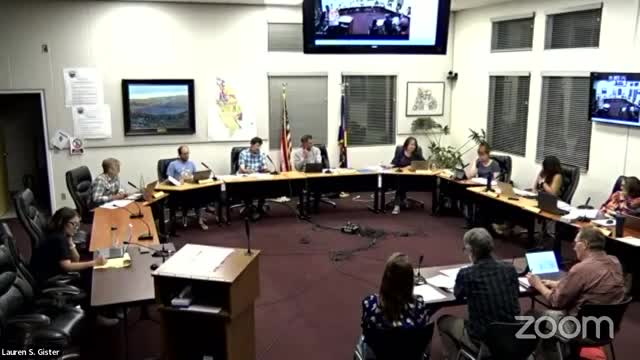Tree removal sparks heated debate over urban design choices
September 10, 2024 | Carbondale, Garfield County, Colorado
This article was created by AI summarizing key points discussed. AI makes mistakes, so for full details and context, please refer to the video of the full meeting. Please report any errors so we can fix them. Report an error »

During a recent government meeting, officials discussed the fate of a significant tree slated for removal due to a construction project. The tree, initially valued at $250,000 by the tree board, has become a contentious topic among board members, with some advocating for its preservation while others argue against the high costs associated with saving it.
One member expressed skepticism about the value of the tree, suggesting that investing $200,000 to save it would be unwise. Instead, they proposed reallocating funds to plant a new, more suitable tree that would grow alongside the new building, emphasizing the long-term benefits of such a decision. The discussion highlighted the importance of trees in urban design, with concerns raised about the aesthetic impact of removing mature trees, which contribute to the character of the area.
Another board member pointed out that the original arguments for the project included the benefits of existing tree canopies and windbreaks, suggesting that the removal of trees could undermine these advantages. They expressed disappointment over the potential loss of greenery, which they believe enhances the urban landscape.
The conversation also touched on the inclusion of a spa in the project, with some members questioning its necessity and suggesting it could be postponed or removed entirely. They argued that the spa's value diminishes during the summer months when outdoor activities are more popular, and that local facilities could fulfill community needs without adding to the project's costs.
As the meeting progressed, it became clear that the majority of board members were not in favor of spending significant funds to save the tree. Instead, they considered alternative options, such as utilizing the tree's wood for community art projects if it must be removed. The discussion concluded with a consensus that further exploration of the tree's condition and potential preservation methods would be beneficial, but the financial implications would ultimately guide their decision.
One member expressed skepticism about the value of the tree, suggesting that investing $200,000 to save it would be unwise. Instead, they proposed reallocating funds to plant a new, more suitable tree that would grow alongside the new building, emphasizing the long-term benefits of such a decision. The discussion highlighted the importance of trees in urban design, with concerns raised about the aesthetic impact of removing mature trees, which contribute to the character of the area.
Another board member pointed out that the original arguments for the project included the benefits of existing tree canopies and windbreaks, suggesting that the removal of trees could undermine these advantages. They expressed disappointment over the potential loss of greenery, which they believe enhances the urban landscape.
The conversation also touched on the inclusion of a spa in the project, with some members questioning its necessity and suggesting it could be postponed or removed entirely. They argued that the spa's value diminishes during the summer months when outdoor activities are more popular, and that local facilities could fulfill community needs without adding to the project's costs.
As the meeting progressed, it became clear that the majority of board members were not in favor of spending significant funds to save the tree. Instead, they considered alternative options, such as utilizing the tree's wood for community art projects if it must be removed. The discussion concluded with a consensus that further exploration of the tree's condition and potential preservation methods would be beneficial, but the financial implications would ultimately guide their decision.
View full meeting
This article is based on a recent meeting—watch the full video and explore the complete transcript for deeper insights into the discussion.
View full meeting
